ping-command
ping-usage-basics)
ping-network-testing-connectivity
how-to-use-ping-to-test-your-network
what is the use of ping command with detail points
how to troubleshoot network or monitor performane using ping through linux command with examples
checklist for error for ping commands with examples
network Availability or reachability
low response time (or latency) is better than a high response
LAN with high-speed Ethernet connections, a response time of a few milliseconds
WAN or across the internet, a response time of tens or hundreds of milliseconds
verify device is down or if the response time is slow
Destination Host Unreachable means your website url not opening
How to verify packet loss is huge using ping commands
How to verify network latency using ping commands
How to verify throughput and reliability of the network
How to verify DNS server is functioning properly using ping commands
How to verify throughput and reliability of the network using ping commands
misconfiguration or a connectivity issue during ping commands with examples
how to resolve the issue Request timed out during ping commands
how to Check if the destination host is up or running using linux commands
Check the firewall settings on both the source and destination hosts using linux commands
Check the network devices such as routers, switches, or hubs between the source and destination hosts to find network congestion or packet loss using linux commands
Increase the time-out value in the ping command to allow more time for the response using linux commands
how to resolve the Unknown host during linux commands
how to Check your DNS settings during linux commands
how to verify Check your network connection using ifconfig or ip addr in linux commands
how to resolve Ping request could not find host using linux commands
how to identify the response time or packet loss is huge using linux
The ping command is a simple yet powerful networking tool that is used to test the reachability and response time of a network device, such as a server or a router. The ping command works by sending an ICMP (Internet Control Message Protocol) echo request packet to the target device and waiting for a response. Here are some key uses of the ping command:
- verify network Availability or reachability using ping commands. verify device is down or if the response time is slow using ping commands.
- verify packet loss is huge using ping commands. verify network latency using ping commands.
- verify throughput and reliability of the network using ping commands.
- verify DNS server is functioning properly using ping commands.
what is the use of ping command with detail points
Testing network connectivity: The ping command is used to test whether a network device is reachable over the network. If the device responds to the ping request, it indicates that the device is accessible and the network connection is functioning.
Measuring network latency: The ping command can be used to measure the response time of a network device. By measuring the time it takes for a ping request to travel from the sender to the target and back, the ping command can provide an estimate of network latency.
Troubleshooting network issues: The ping command can be used to troubleshoot various network issues, such as connectivity problems, packet loss, and high latency. By analyzing the output of the ping command, network administrators can identify issues and take corrective action.
Testing network performance: The ping command can be used to test the performance of a network, such as the throughput and reliability of the network. By performing multiple ping requests and analyzing the results, network administrators can gain insights into the performance of the network.
Testing DNS resolution: The ping command can be used to test whether a DNS server is functioning properly. By pinging a domain name, the ping command can verify that the DNS server is able to resolve the domain name to an IP address.
To verify the availability or reachability of a network device or server using the ping command, you can follow these steps:
a low response time (or latency) is better than a high response time, because it indicates that the network connection is fast and responsive. However, what is considered "good" or "acceptable" response time depends on various factors, such as the type of network, the distance between devices, the quality of the connection, and the applications or services being used.
For example, in a local network with high-speed Ethernet connections, a response time of a few milliseconds or less may be considered normal. In contrast, in a wide-area network (WAN) or across the internet, a response time of tens or hundreds of milliseconds may be more typical. In some cases, such as when streaming video or using real-time applications, a response time of a few seconds or less may be required for acceptable performance.
In the example output above, the ping command successfully sent 5 ICMP echo requests to the Google DNS server at IP address 8.8.8.8, and received 5 ICMP echo reply packets back. The response time (also known as round-trip time or RTT) was between 5.67 and 6.31 milliseconds, with an average of 6.02 milliseconds. There was no packet loss. This indicates that the Google DNS server is reachable and responding to ping requests.
verify device is down or if the response time is slow
You can use the ping command to check if a device is down or if the response time is slow by analyzing the output of the command. Here are some guidelines:
If the device is down or not reachable, the ping command will show a message like "Destination Host Unreachable" or "Request timed out". This means that the device did not respond to the ICMP echo requests sent by the ping command. For example:
Note
Destination Host Unreachable means your website url not opening
www.dfvdf.com
If the device is up but the response time is slow, the ping command will show a higher-than-normal round-trip time (RTT) or latency. This can happen if the network connection is congested, if the device is under heavy load, or if there are other factors affecting network performance. For example:
In general, a high packet loss or a slow response time may indicate a problem with the network or the device being tested. It's a good idea to monitor network performance over time using tools like ping or specialized network monitoring software, and to investigate any anomalies or issues that are detected.
how to troubleshoot network or monitor performane using ping through linux command
- Open a terminal window on your Linux machine.
- Type the following command to ping a host or IP address:
ping <host or IP address>
For example, if you want to ping Google's DNS server at IP address 8.8.8.8, you can use the following command:
ping 8.8.8.8
3.After executing the ping command, you will see a series of output lines in the terminal window. These lines show the round-trip time (RTT) for each ping request, as well as statistics on packet loss and other information.
Here are some examples of how to use the ping command to troubleshoot network or monitor performance:
a.To ping a host or IP address and limit the number of ping requests to 5, use the following command:
ping -c 5 <host or IP address>
For example, to ping the Google DNS server 8.8.8.8 and limit the number of requests to 5, use the following command:
ping -c 5 8.8.8.8
2.To continuously ping a host or IP address and display the results in real-time, use the following command:
ping -t <host or IP address>
For example, to continuously ping the Google DNS server 8.8.8.8 and display the results in real-time, use the following command:
ping -t 8.8.8.8
3.To adjust the interval between ping requests, use the following command:
ping -i <interval> <host or IP address>
For example, to ping the Google DNS server 8.8.8.8 with a 2-second interval between requests, use the following command
ping -i 2 8.8.8.8
checklist for error for ping commands with examples
Here is a checklist of some common errors that you might encounter when using the ping command, along with some examples of how to troubleshoot them:
1.Host not reachable: This error occurs when the remote host is not reachable or is down. To troubleshoot this issue, check the network connectivity between the local and remote hosts, and verify that the remote host is up and running. Here's an example of what the output might look like:
$ ping 192.168.1.100
PING 192.168.1.100 (192.168.1.100) 56(84) bytes of data.
From 192.168.1.101 icmp_seq=1 Destination Host Unreachable
From 192.168.1.101 icmp_seq=2 Destination Host Unreachable
From 192.168.1.101 icmp_seq=3 Destination Host Unreachable
...
In this example, the ping command is trying to ping the IP address 192.168.1.100, but the remote host is not reachable. The output shows that the packets are being dropped, which indicates that there is a network connectivity issue.
2.Request timed out: This error occurs when the remote host is not responding to the ping request. To troubleshoot this issue, check the network connectivity between the local and remote hosts, and verify that the remote host is configured to respond to ping requests. Here's an example of what the output might look like:
$ ping google.com
PING google.com (172.217.4.78) 56(84) bytes of data.
^C
--- google.com ping statistics ---
3 packets transmitted, 0 received, 100% packet loss, time 2006ms
In this example, the ping command is trying to ping google.com, but the remote host is not responding to the requests. The output shows that all packets were lost, indicating that there is an issue with connectivity or the remote host is not configured to respond to ping requests.
3.Destination unreachable: This error occurs when the network path to the remote host is not available or is blocked by a firewall or other security measure. To troubleshoot this issue, check the network configuration, firewalls, and routing tables to ensure that the network path is available. Here's an example of what the output might look like:
$ ping 192.168.1.100
PING 192.168.1.100 (192.168.1.100) 56(84) bytes of data.
From 192.168.1.102 icmp_seq=1 Destination Host Unreachable
From 192.168.1.102 icmp_seq=2 Destination Host Unreachable
From 192.168.1.102 icmp_seq=3 Destination Host Unreachable
In this example, the ping command is trying to ping 192.168.1.100, but the packets are being dropped due to a destination unreachable error. This could be caused by a firewall or other security measure blocking the network path to the remote host.
4.Timeouts: This error occurs when the ping command is taking too long to receive a response from the remote host. To troubleshoot this issue, try increasing the timeout value using the -W option. Here's an example of what the output might look like:
$ ping google.com -W 5
PING google.com (172.217.4.78) 56(84) bytes of data.
^C
--- google.com ping statistics ---
5 packets transmitted, 0 received, 100% packet loss, time 4084ms
How to verify packet loss is huge using ping commands
To verify whether packet loss is occurring on a network, you can use the ping command with a large number of packets and analyze the results. Here are the steps to follow:
1.Open a terminal window on a Linux machine.
2.Type the following command: ping -c 1000
This command will send 1000 ICMP echo request packets to the target IP address.
3.Wait for the ping command to finish running. Once it completes, it will display the results, including the number of packets sent, received, and lost.
4.Analyze the results to determine if packet loss is occurring. If the number of packets lost is significant, such as more than 5-10%, then there may be a problem with the network connection.
For example, if the ping command reports that 1000 packets were sent, but only 950 were received, then there is a 5% packet loss rate.
If you suspect that packet loss is occurring on your network, you can try the following steps to troubleshoot the issue:
1.Check the network cables and connections to ensure they are properly connected and not damaged.
2.Check the network devices, such as routers and switches, to ensure they are functioning properly and not overloaded.
3.Check for any network congestion or bandwidth issues that may be causing packet loss.
By using the ping command and analyzing the results, you can quickly and easily identify whether packet loss is occurring on your network and take corrective action to address the issue.
How to verify network latency using ping commands
You can use the ping command to verify network latency, which is the time it takes for a packet to travel from the source to the destination and back again. Here is how to do it:
1.Open a terminal window on a Linux machine.
2.Type the following command: ping -c 10
This command will send 10 ICMP echo request packets to the target IP address.
3.Wait for the ping command to finish running. Once it completes, it will display the results, including the average round-trip time (RTT) for the packets.
For example, the output might look something like this:
10 packets transmitted, 10 received, 0% packet loss, time 9015ms
rtt min/avg/max/mdev = 2.550/3.632/6.526/1.360 ms
In this example, the average RTT is 3.632 milliseconds.
4.Analyze the results to determine the network latency. The average RTT value is an indication of the network latency. The lower the value, the better the network performance.
If the average RTT value is high, it may indicate that there is a problem with the network, such as congestion, bandwidth issues, or a high number of hops between the source and destination.
By using the ping command to measure network latency, you can quickly and easily identify any performance issues with your network and take corrective action to address the problem.
How to verify throughput and reliability of the network using ping commands
ping -s 1472 -i 0.1 -c 1000 <target_IP_address>
ping -f -M do -s 1472 -c 1000 <target_IP_address>
How to verify DNS server is functioning properly using ping commands
You can use the ping command to verify if the DNS server is functioning properly by pinging a domain name and checking if it resolves to the correct IP address. Here's how to do it:
How to verify throughput and reliability of the network using ping commands
misconfiguration or a connectivity issue during ping commands with examples
how to resolve the issue Request timed out during ping commands
how to Check if the destination host is up or running using linux commands
Check the firewall settings on both the source and destination hosts using linux commands
You can use the iptables command to check the firewall settings on both the source and destination hosts. Here is an example:
1.Open the terminal on your Linux machine.
2.Type the following command to check the firewall settings on the source host:
sudo iptables -L
sudo iptables -L | grep icmp
sudo iptables -D [chain name] [rule number]
sudo iptables -D INPUT 3
Check the network devices such as routers, switches, or hubs between the source and destination hosts to find network congestion or packet loss using linux commands
traceroute -I google.com
Increase the time-out value in the ping command to allow more time for the response using linux commands
By increasing the time-out value in the ping command, you can allow more time for the response, which can help diagnose network issues that may be causing slow or unresponsive connections.
how to resolve the Unknown host during linux commands
If you encounter the "Unknown host" error message when running a Linux command, it typically means that the system is unable to resolve the hostname or domain name to an IP address. Here are some steps you can take to resolve the issue:
Here's an example of how to use an IP address instead of a hostname:
how to Check your DNS settings during linux commands
cat /etc/resolv.conf
how to verify Check your network connection using ifconfig or ip addr in linux commands
To verify your network connection on a Linux system, you can use the ifconfig or ip addr command to display information about your network interfaces.
Here's an example of how to use ifconfig:
ifconfig
This will display information about all network interfaces on your system, including their IP addresses, netmasks, and status. The output may look something like this:
In this example, the eth0 interface is up and running, with an IP address of 192.168.1.100 and a netmask of 255.255.255.0.
Alternatively, you can use the ip addr command to display similar information:
ip addr show
This will display detailed information about all network interfaces, including their IP addresses, netmasks, and link status. The output may look something like this:
1: lo: <LOOPBACK,UP,LOWER_UP> mtu 65536 qdisc noqueue state UNKNOWN group default qlen 1000
inet 127.0.0.1/8 scope host lo
valid_lft forever preferred_lft forever
2: eth0: <BROADCAST,MULTICAST,UP,LOWER_UP> mtu 1500 qdisc mq state UP group default qlen 1000
inet 192.168.1.100/24 brd 192.168.1.255 scope global eth0
valid_lft forever preferred_lft forever
Again, in this example, the eth0 interface is up and running, with an IP address of 192.168.1.100 and a netmask of 255.255.255.0.
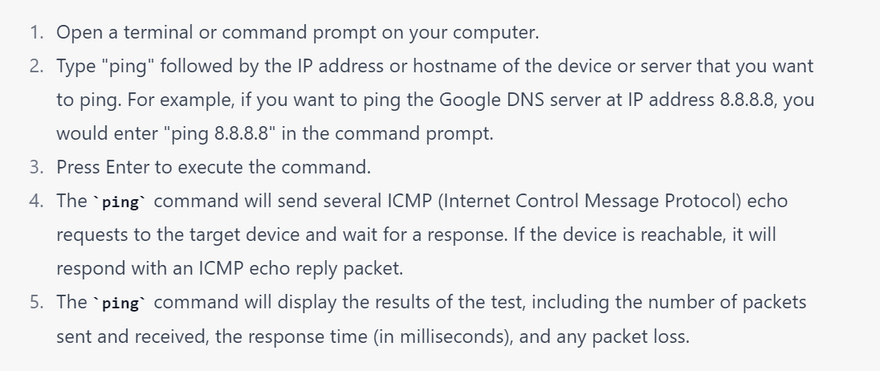
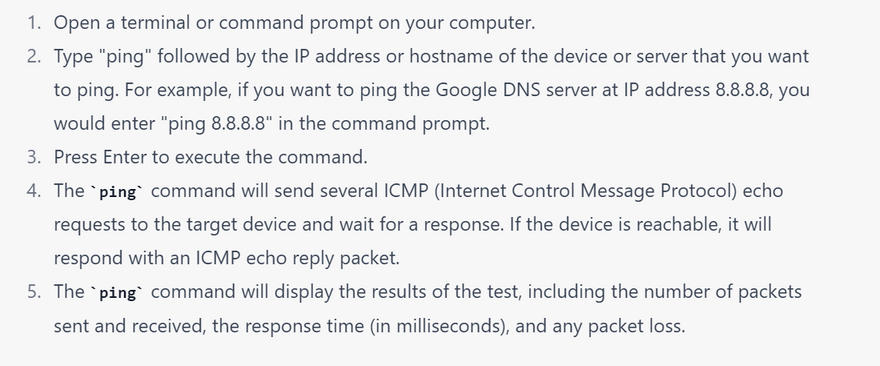
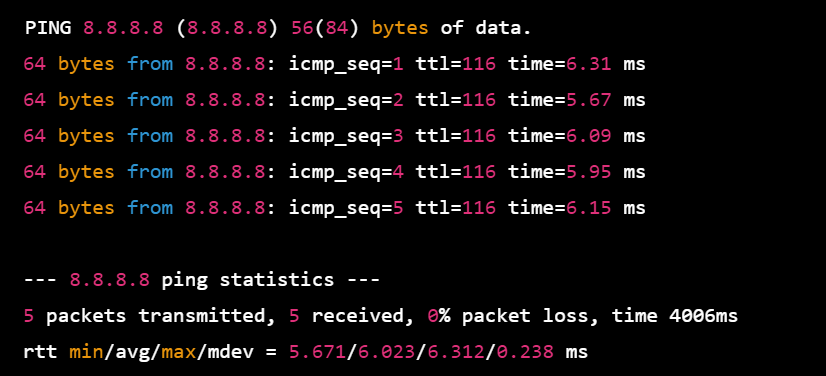


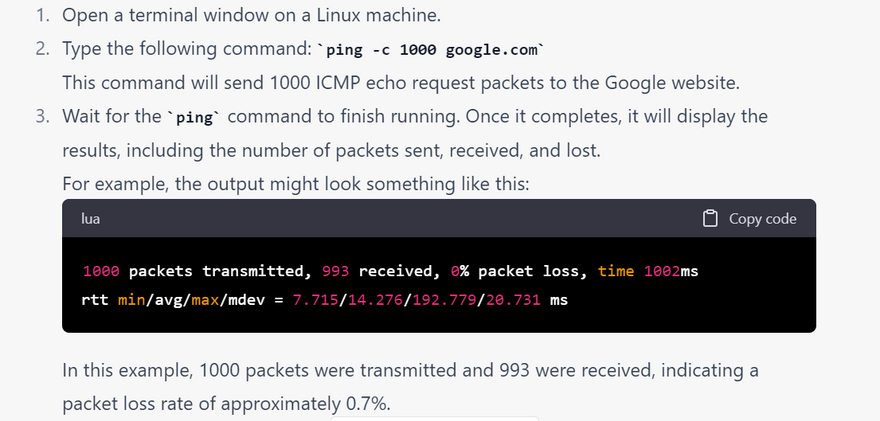

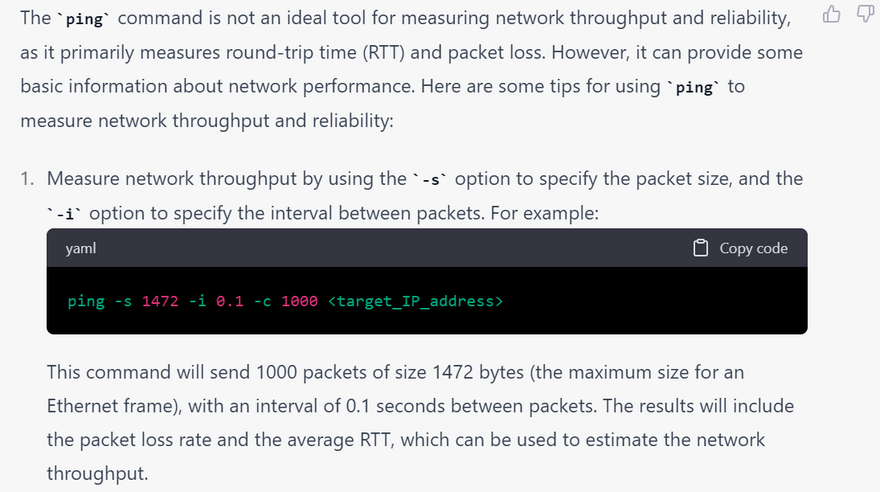
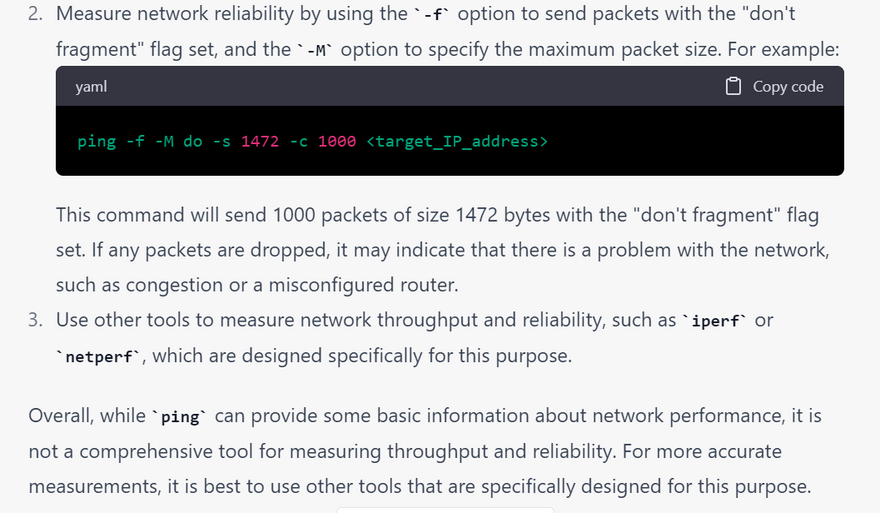
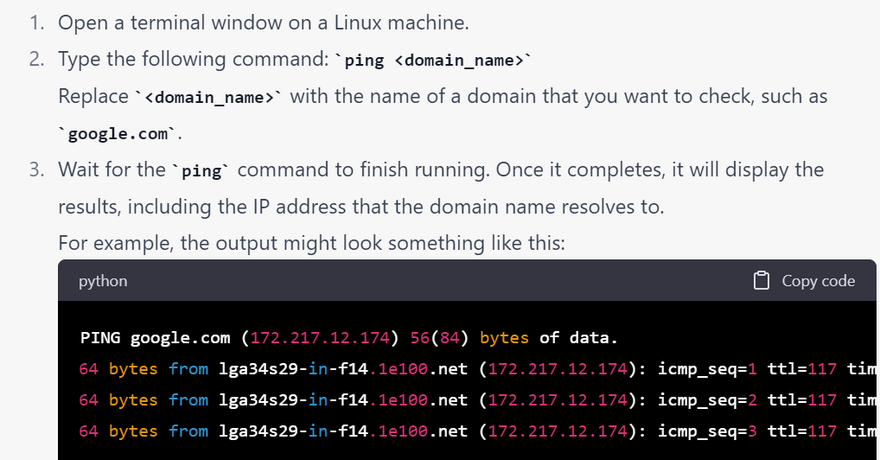
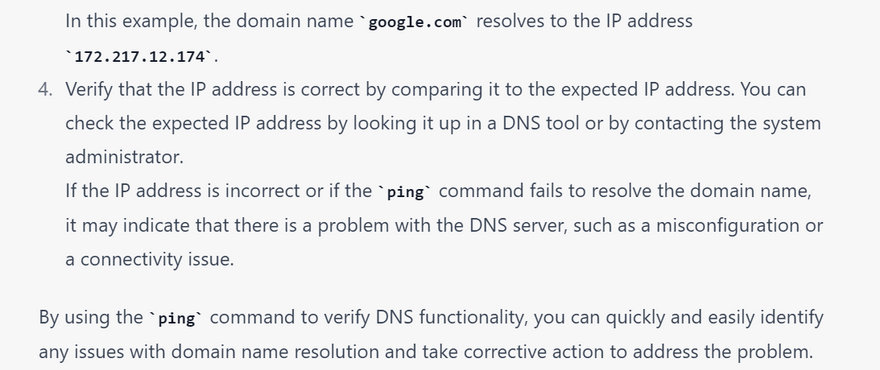
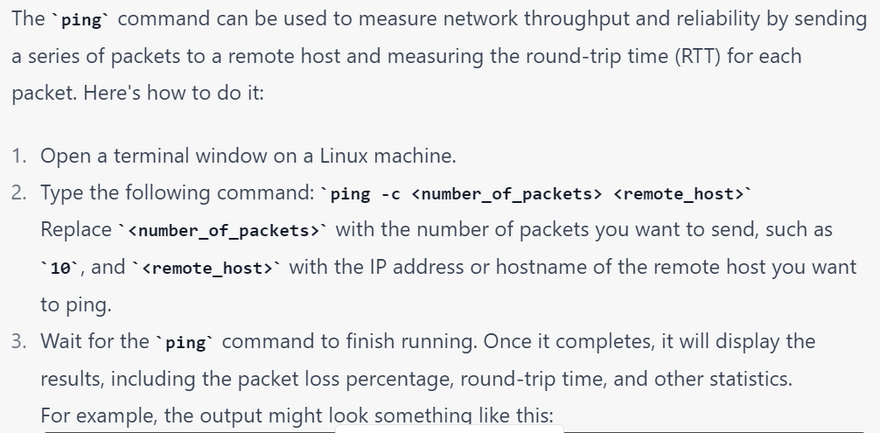
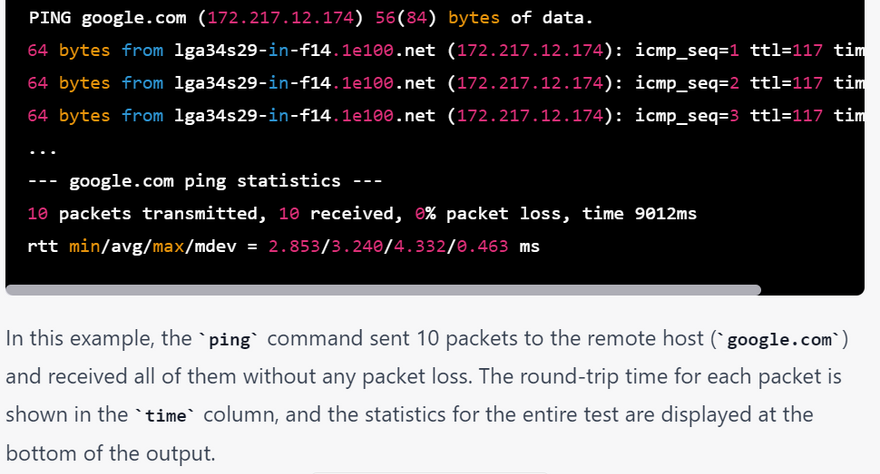
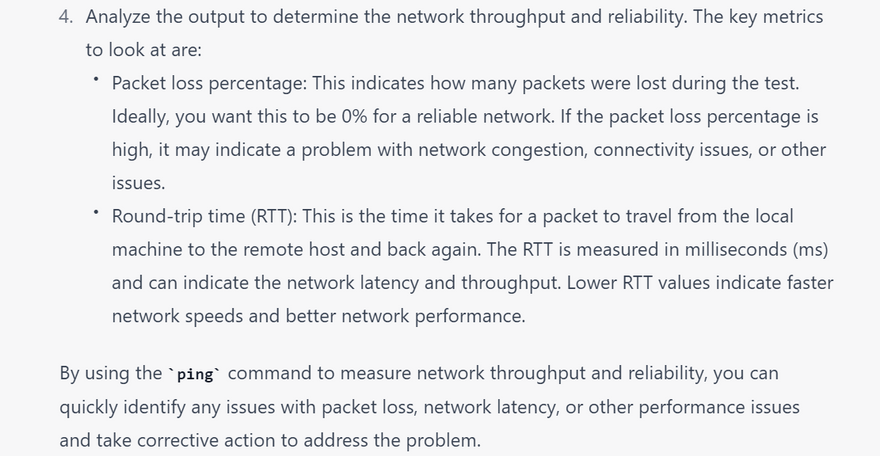
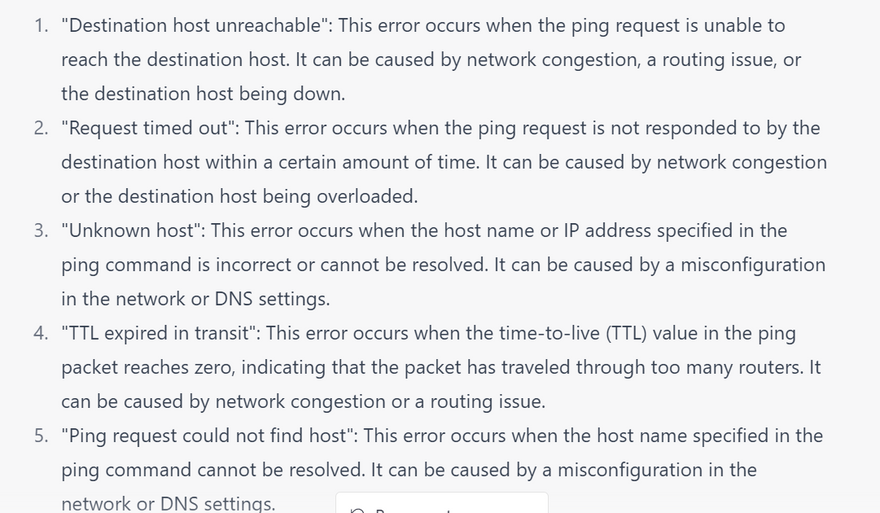

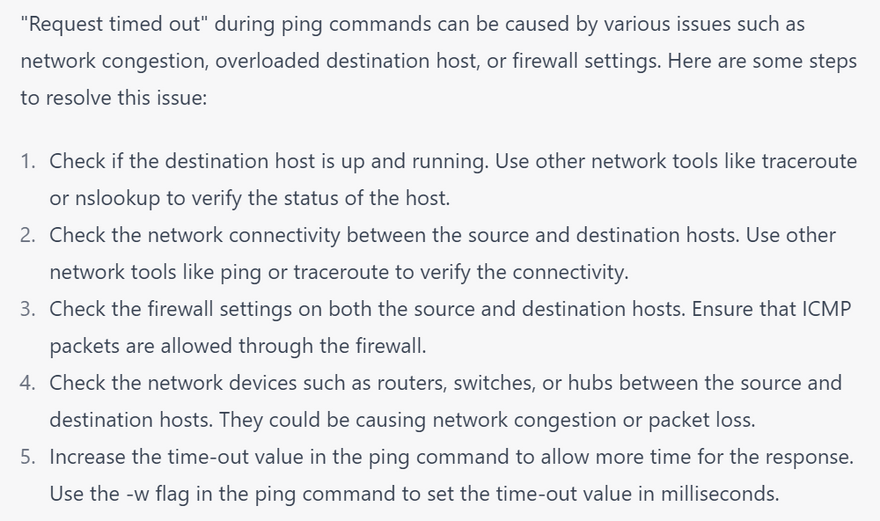

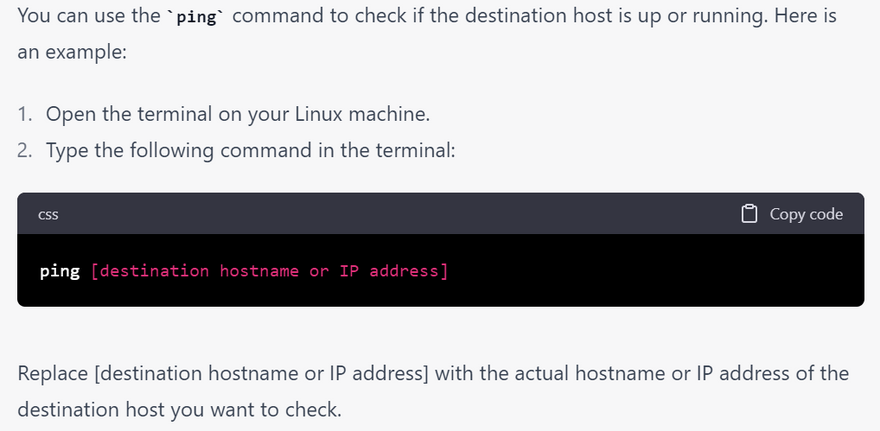
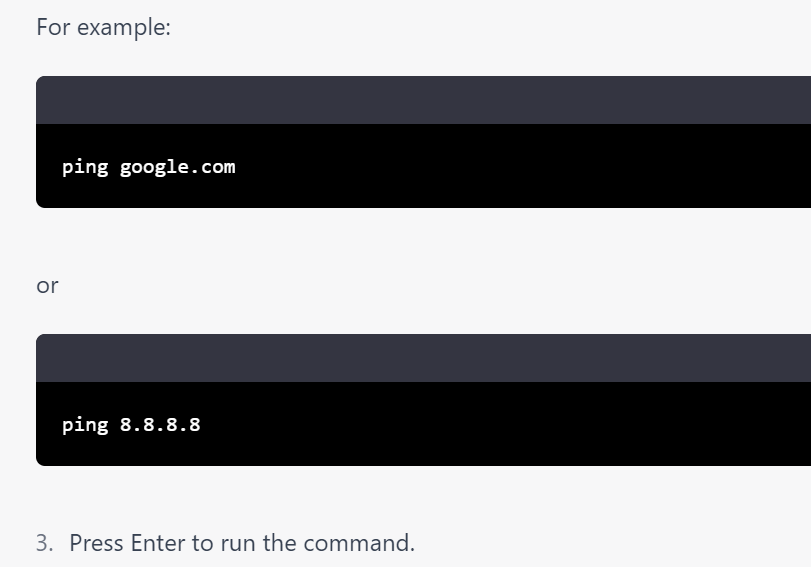
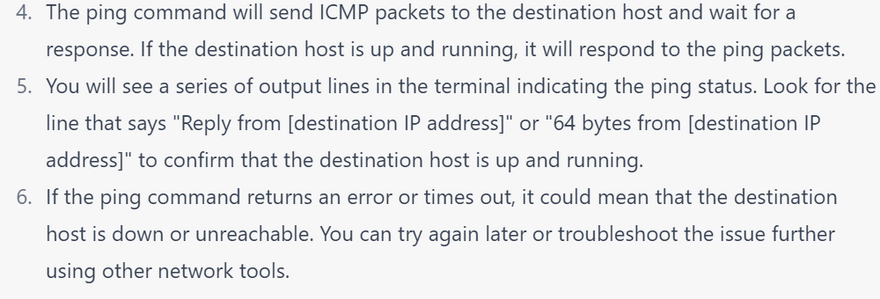
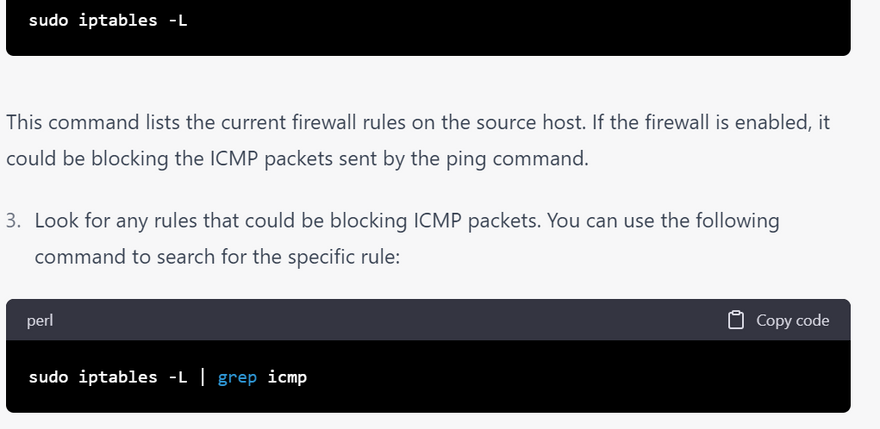
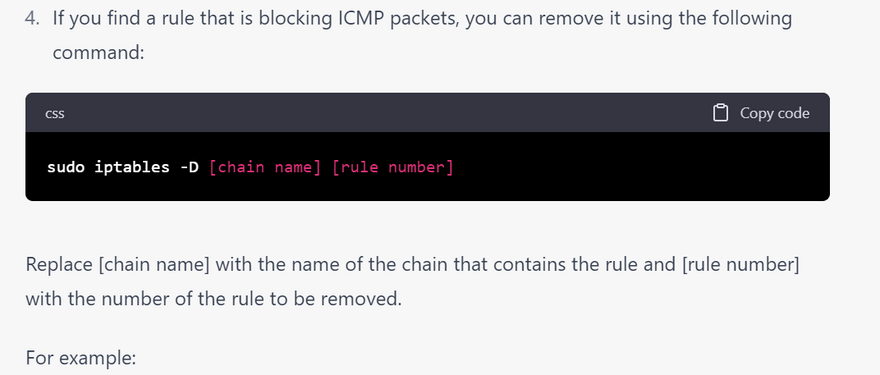
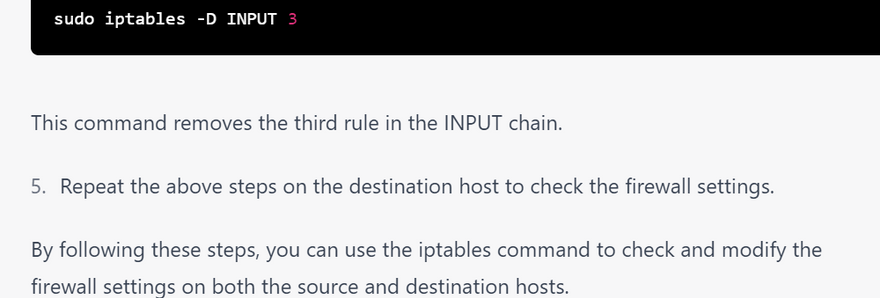
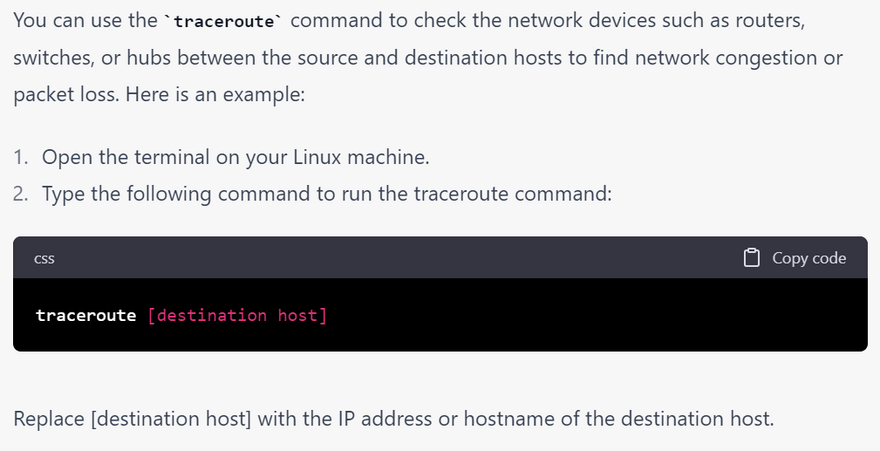
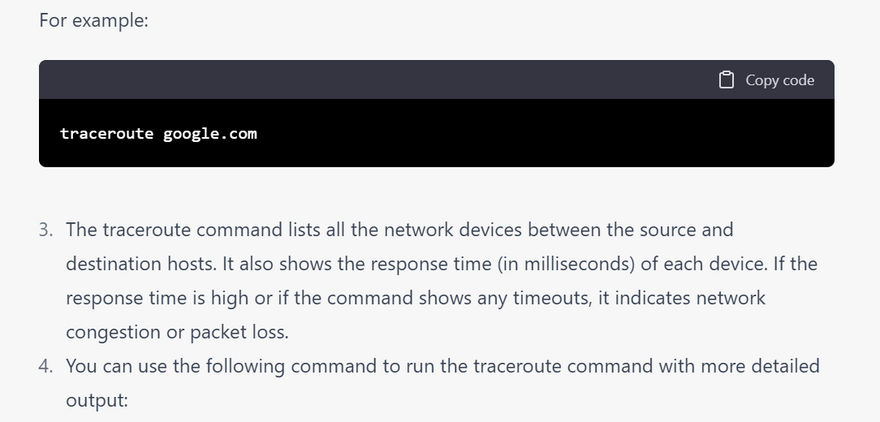
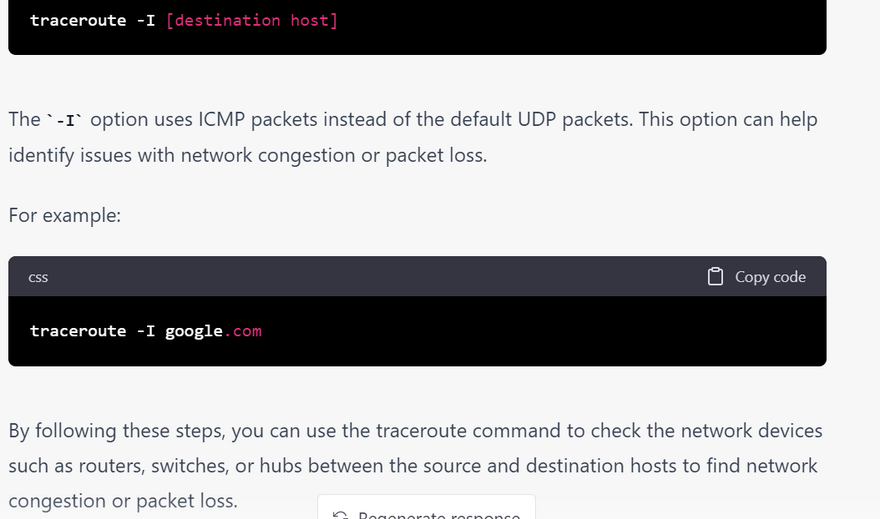
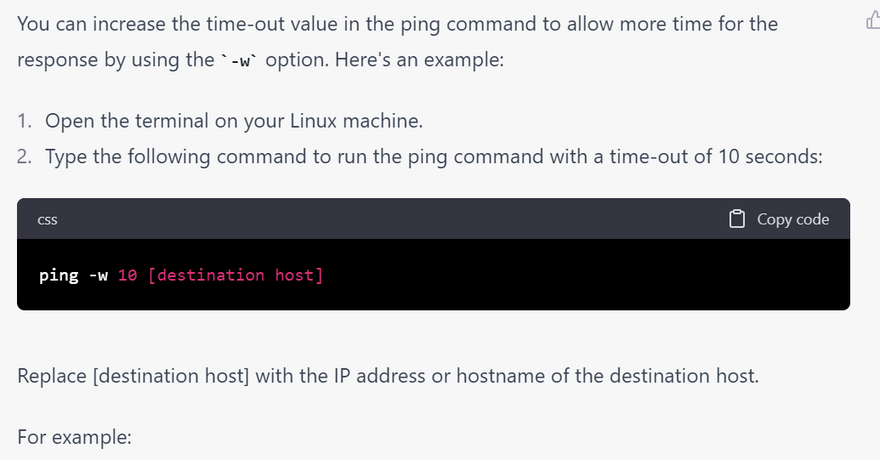
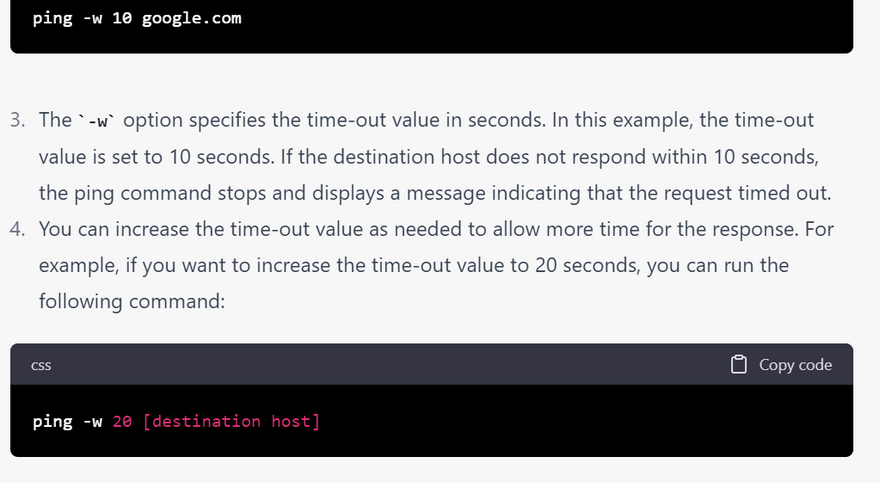
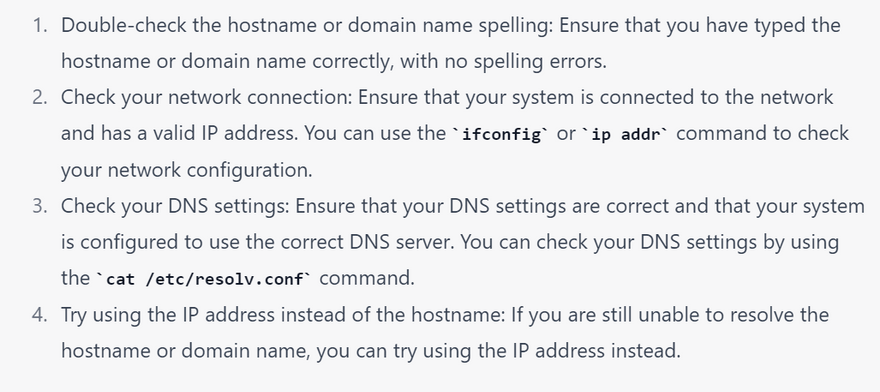
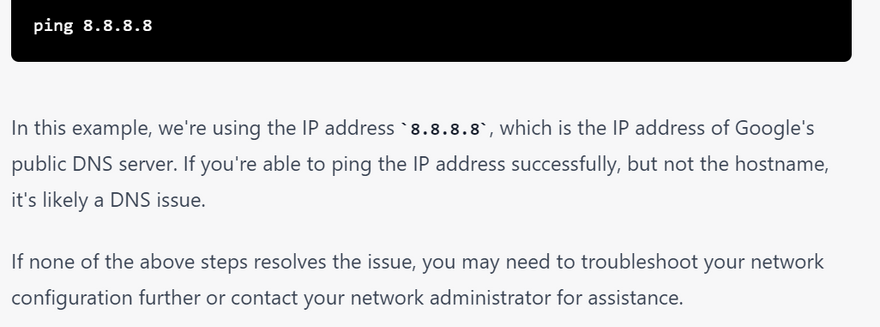
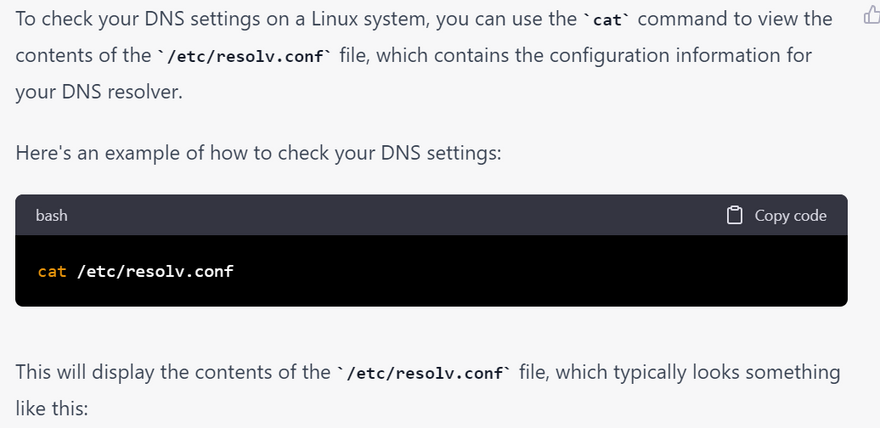


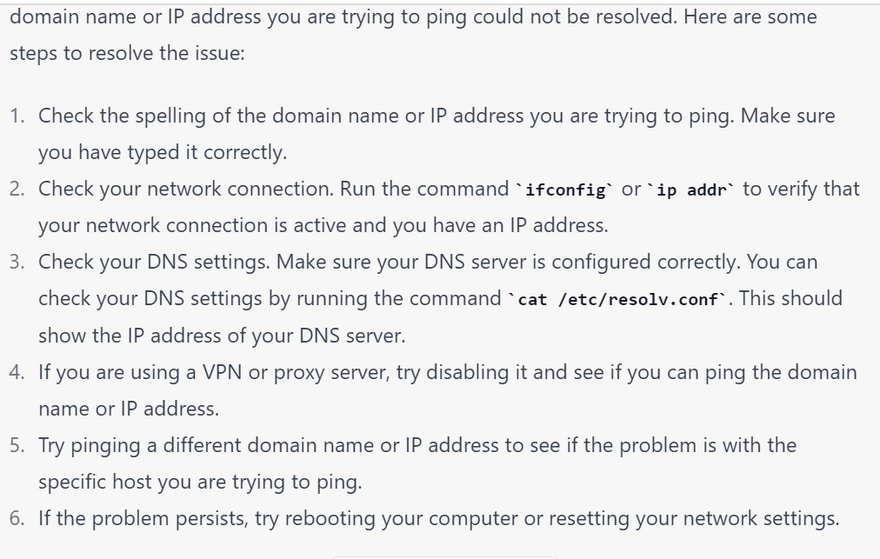

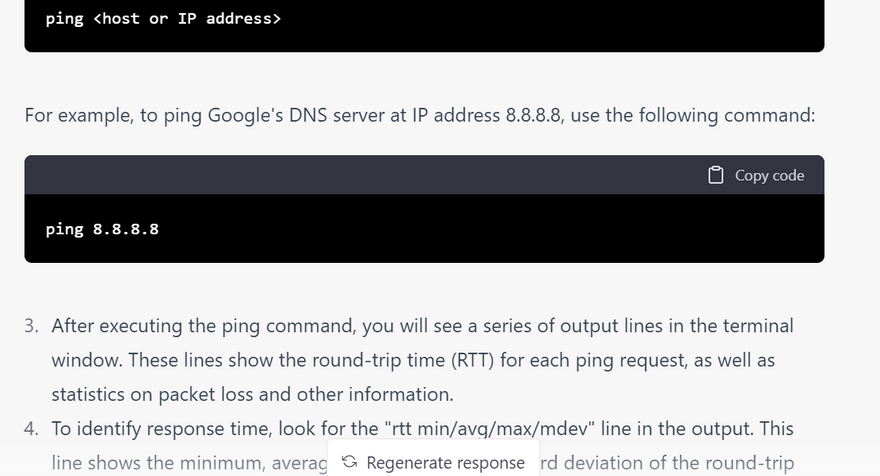

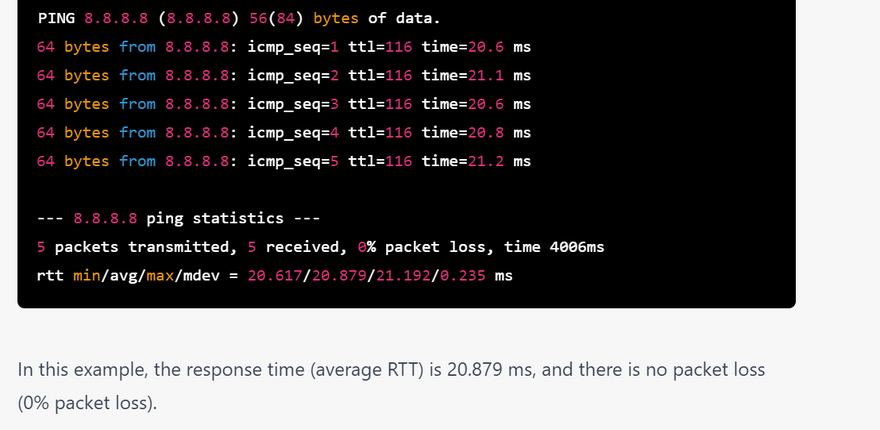


Top comments (0)